Click here to read the previous post, Adjusting to Life in Spain: Tour of the Prado Museum
Despite only having five suitcases worth of belongings, unpacking and organizing everything takes longer than I would have imagined. It’s like my luggage has turned into Snoopy’s doghouse. So I put this task on hold and go out to explore the neighborhood, Palacio.
Close by, and next to the Royal Palace, is the Catedral de Santa María la Real de la Almudena (Cathedral of Saint Mary the Royal of Almudena), a Baroque Catholic cathedral known for its colorful chapels, plus a Romanesque crypt and museum. It was designed in 1879 by Francisco de Cubas, who was inspired by the French 18th century Gothic style.
But by the early 1940s, society’s tastes changed and the Gothic cathedral was considered passé, so “in 1944, the Directorate General for Fine Arts announced a national contest to find a new architectural solution; Fernando Chueca Goitia and Carlos Sidro were the winners.”
I haven’t been inside it yet, but most days I can hear the bells chime all the way from my apartment. Fortunately, they never ring before 11 a.m. or so.
I continue past the cathedral and walk through a small urban park called Parque de Atenas (Athens Park) with a playground, fountain-slash-dog-bath, tennis courts and plenty of benches which are almost always occupied by people resting, chatting or reading. I love that! I have rarely, if ever, seen people sitting on park benches in L.A. or Vancouver reading (talking, kissing, feeding birds and even fighting, but not reading a book).
Once I cross the street, I am in the Parque Madrid Río (Madrid River Park), which is described on Maps oh-so-poetically as a “modern linear green space” that runs along both sides of the Manzanares River.
Manzanares River in Madrid.
The river wends through the city and has a pedestrian/bike path – or should I call it a “modern linear transit corridor”? – on both sides. The park follows the river for about 15 kilometers (9 miles) between the La Casa de Campo (more on this below) and the town of Getafe (none on this below). One day I’ll walk the whole thing, but for now I walk for a mere forty minutes before turning around and heading back. Sometimes I’m in the midst of a park, that is to say, no buildings are visible (as in the photo above), and other times the path is right by a street.
During my walk, I pass (or cross, so I wind up zigzagging across the river) no less than six bridges:
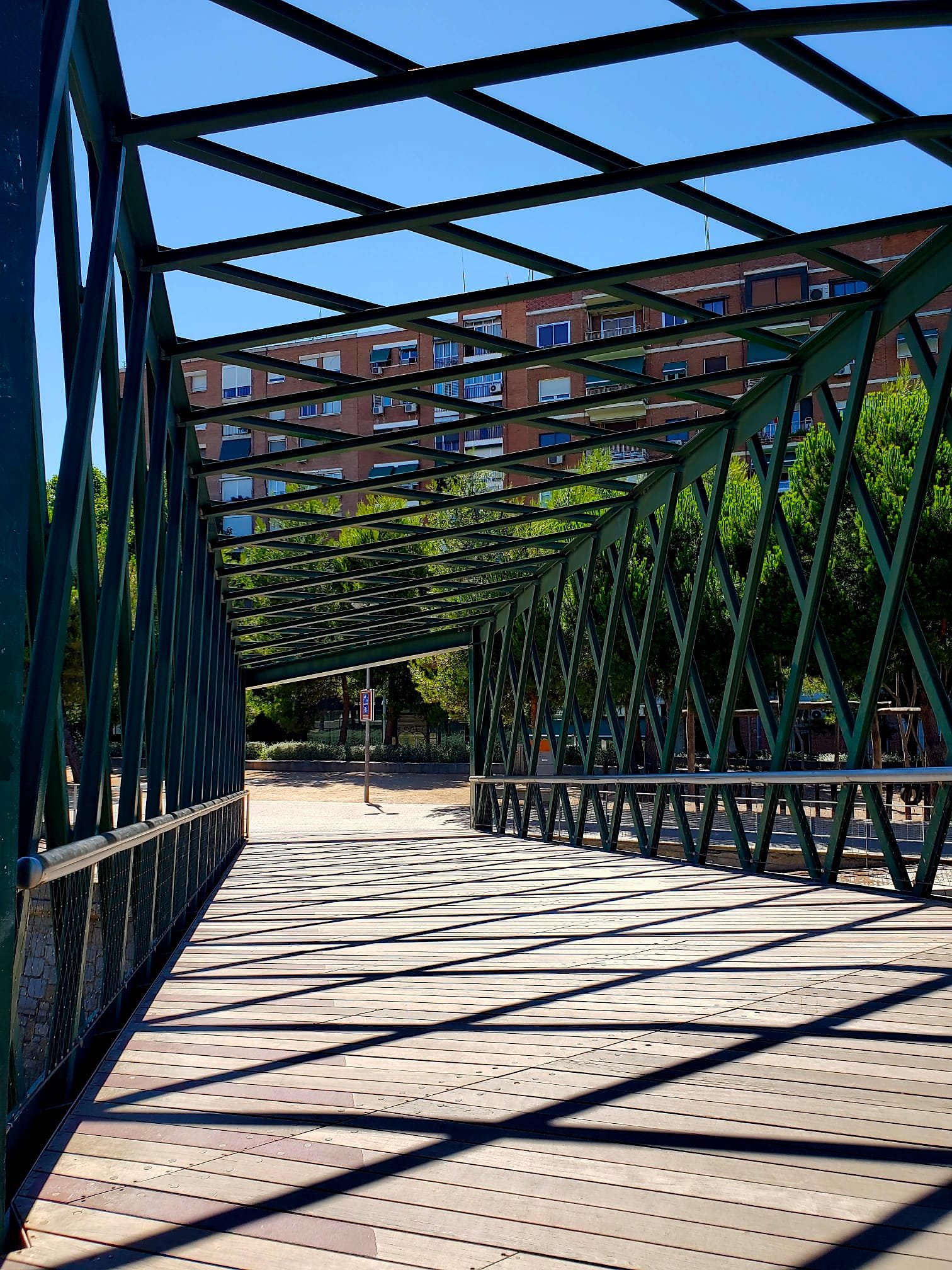
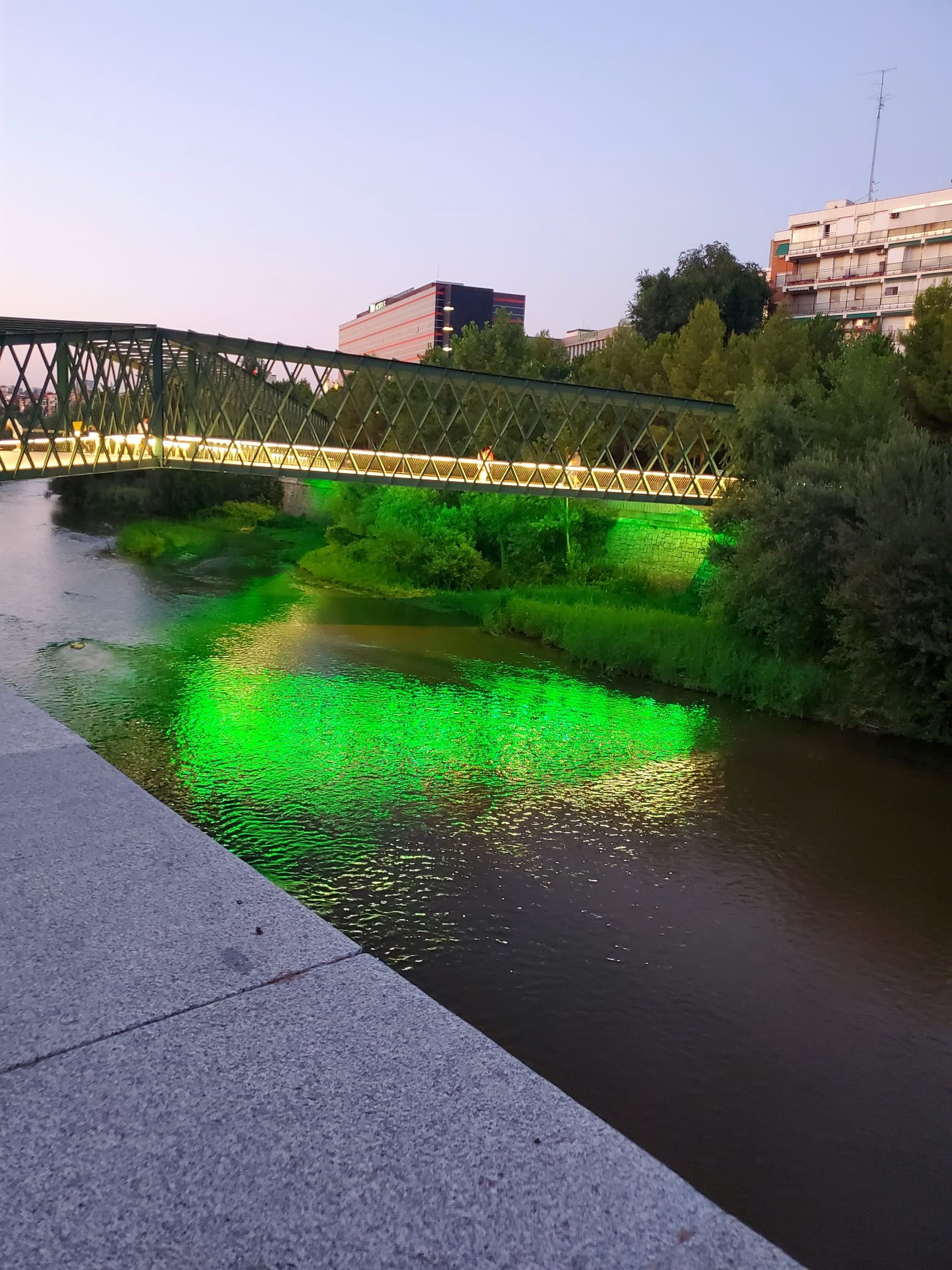
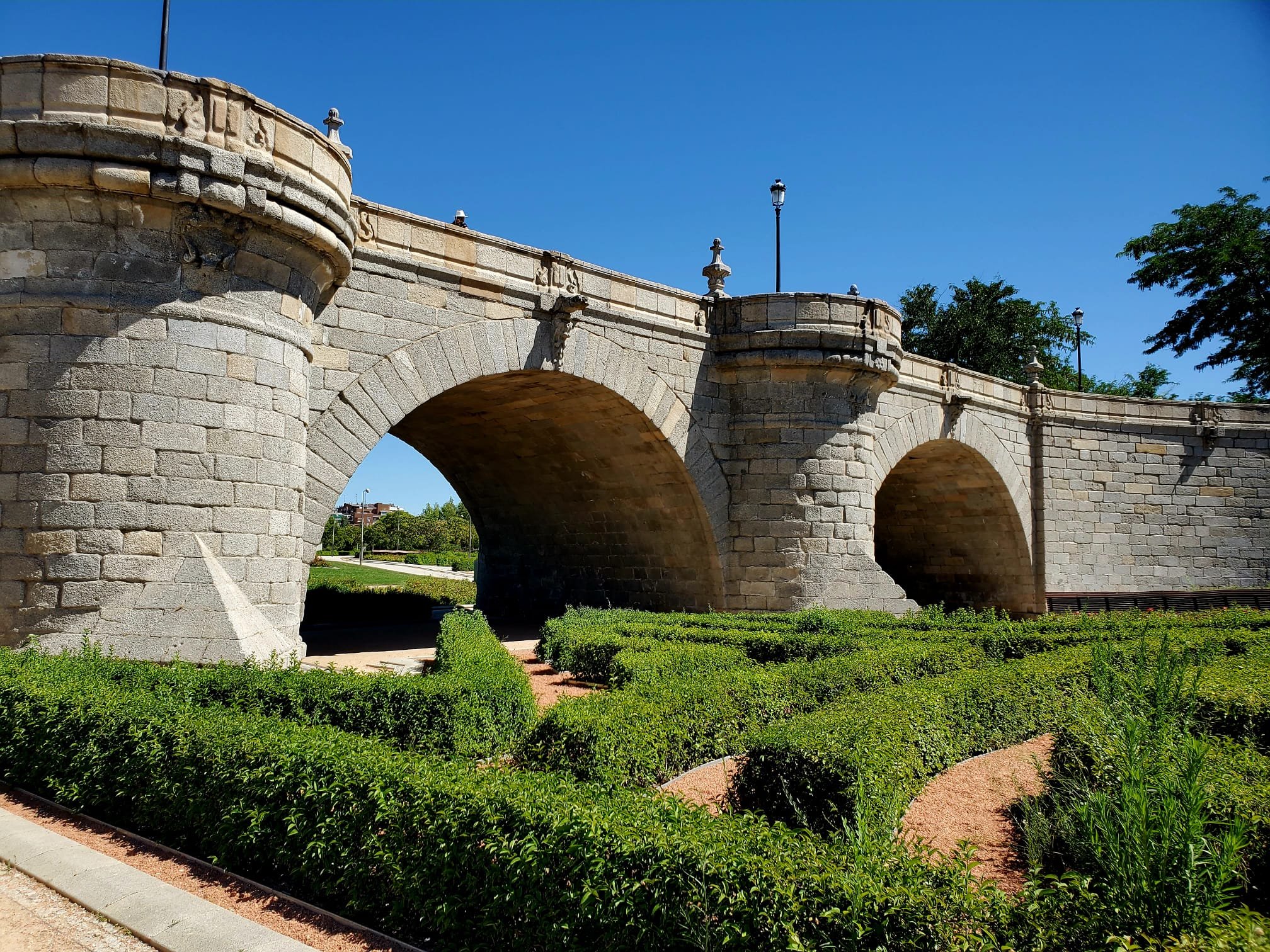

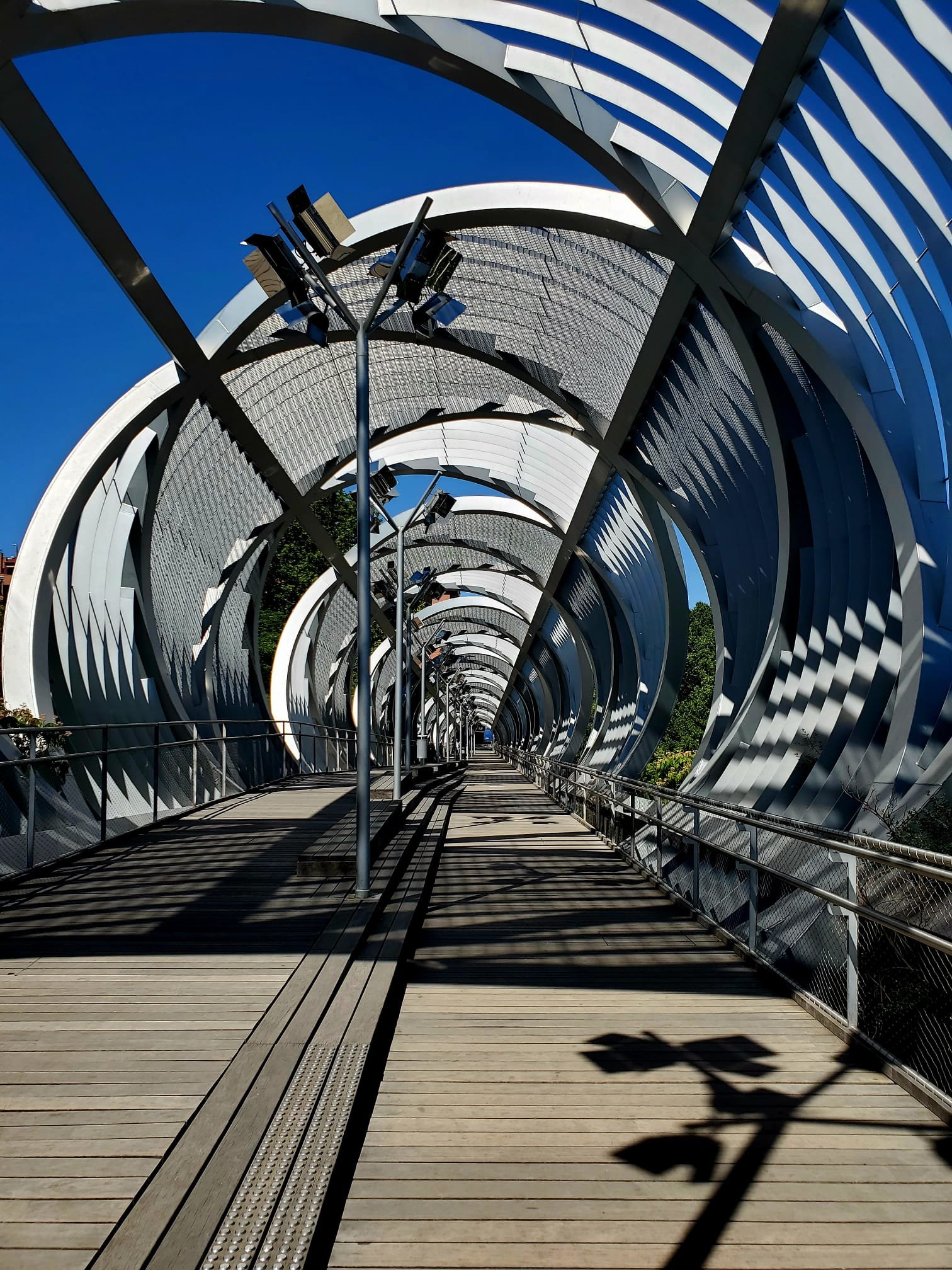

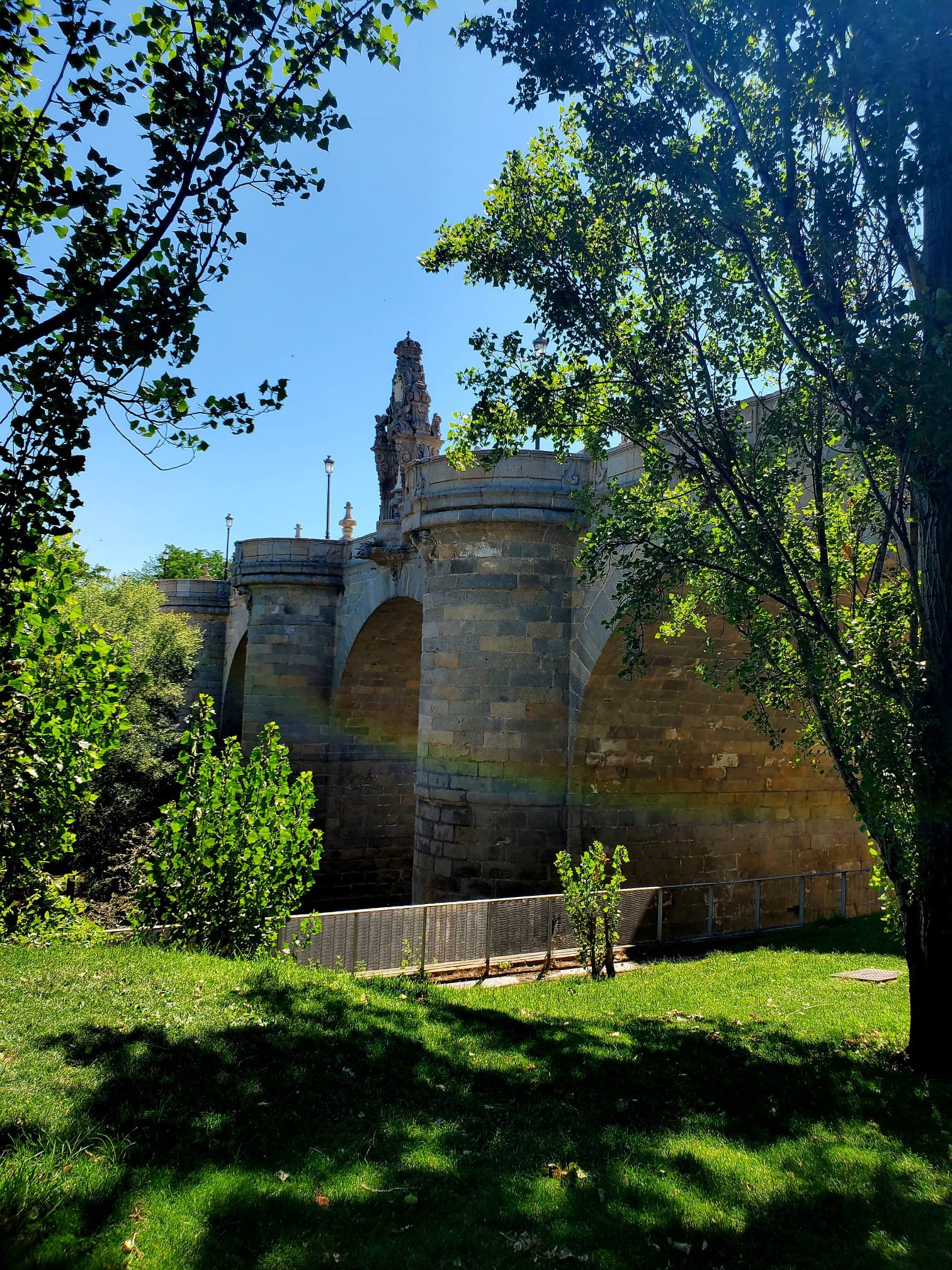
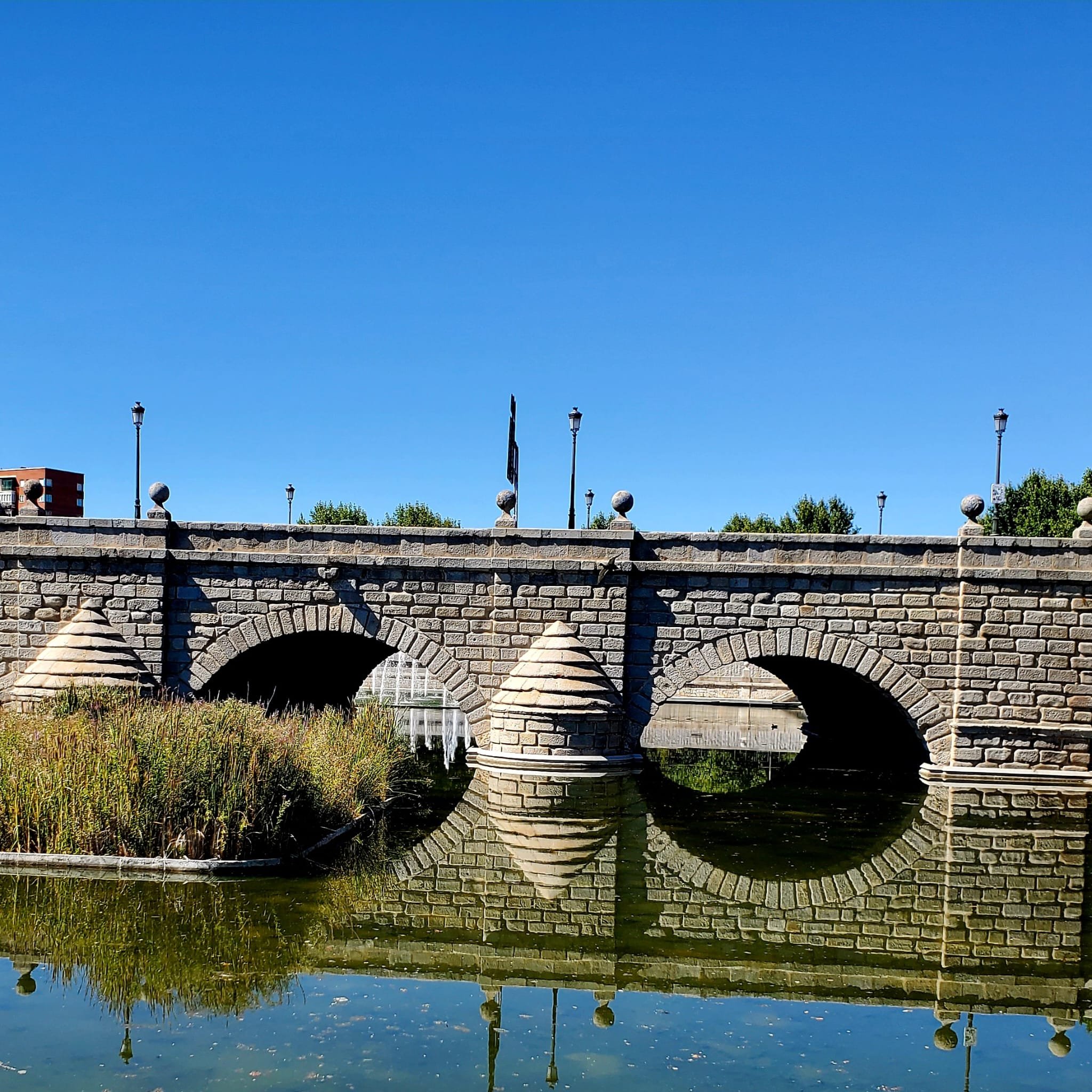
I’m curious about the park called La Casa de Campo (The Country House), so the next evening I head to the river, and then instead of walking along the river’s path, I cross it and head into this little park. Which turns out to be not so little.
At 3,793 acres, it’s about four and a half times as big as New York’s Central Park (843 acres) and a little over three and a half times bigger than Vancouver’s Stanley Park (1,001 acres).
It used to be the royal hunting ground, and has hiking trails…
…a boating lake…
…and a shitting post? pretend desk? work of modern art? Or, as my friend cleverly points out, an exercise squat station.
There are also small hills that are high enough to get a nice view of the city.
I finally make my way back home and, because I’m not hot and tired enough, I walk up the Escaleras Cuesta de la Vega, a set of stairs that is part of the historic area around the Cuesta de la Vega, which is a steep street that descends from the area near the cathedral down towards the area near the Manzanares River.
Source: Google Maps
Source: Google Maps
Who knew there was a river and so many vast and lush parks in the middle of the city? This is one more reason to love my neighborhood, Palacio. Living close to a park was on my “would love to have” list for my dream apartment in Madrid, and it looks like I’m continuing to live the dream!
Click here to read the next post, Adjusting to Life in Spain: How I Meet New People (Cafés and Tabernas)
Note: All photos taken by Selena Templeton, unless otherwise noted.
If you enjoyed reading this travel blog, check out some of my other adventures:












